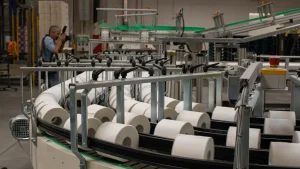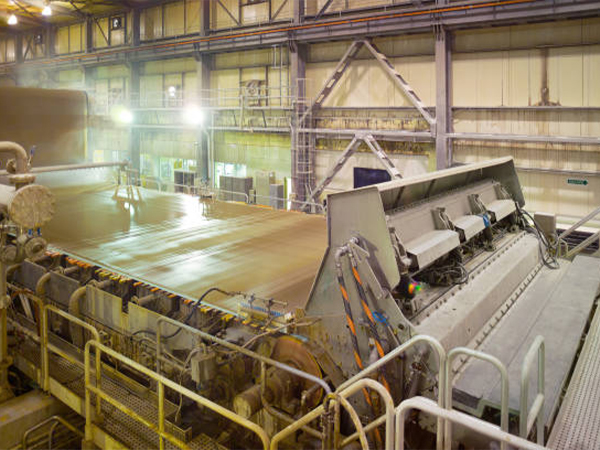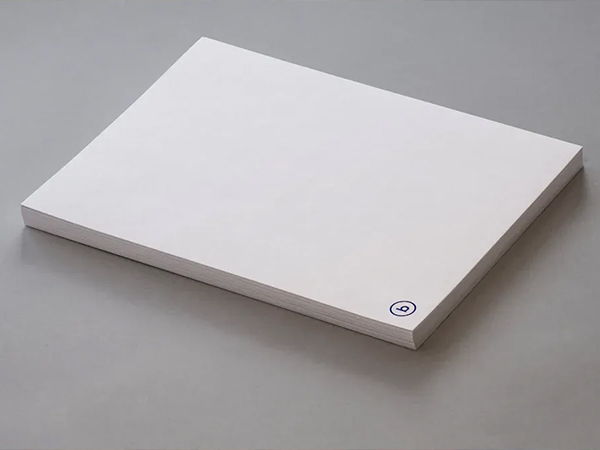
Retention aids support you in achieving higher efficiency and lower material costs in your paper mill. You increase fiber and filler retention, minimize waste, and optimize chemical consumption. You can see immediate improvements in your resource management. The following table highlights how water usage shifts with retention aids, showing a 10–15% allocation of fresh water intake for these additives. This shift reveals substantial savings when you use process water instead.
| Evidence | Description |
|---|---|
| Water Usage | Approximately 10-15% of fresh water intake in a paper mill is allocated for retention aids, indicating potential savings by using process water instead. |
Key Takeaways
- Retention aids significantly enhance fiber and filler retention, leading to less waste and lower material costs in paper production.
- Choosing the right retention aid depends on your specific process conditions and desired paper properties; consult with suppliers for optimal results.
- Implementing retention aids can improve paper quality by enhancing strength, opacity, and uniformity, resulting in a better final product.
- Regular monitoring of retention aid performance is crucial; use sensors and real-time data to maintain efficiency and quality.
- By optimizing retention strategies, mills can achieve substantial cost savings on raw materials and chemicals, improving overall profitability.
What Are Retention Aids

Retention aids play a vital role in papermaking. You use them to improve the retention of fibers, fillers, and other additives during sheet formation. These additives help you control the papermaking process, leading to higher efficiency and better product quality.
Types of Retention Aids
You can choose from several types of retention aids, each designed for specific functions in the paper mill. The table below outlines the most common types and their primary purposes:
| Type | Description |
|---|---|
| Dispersant | Prevents fiber agglomeration, improves paper uniformity, suitable for household paper products. |
| Retention Aid | Increases fiber retention rate, reduces sewage discharge by forming large flocs with small particles. |
| Drainage Aid | Enhances drainage rate for efficient dewatering, increasing production speed and reducing energy use. |
| Sizing Agent | Controls liquid penetration, achieving water resistance and ink holdout in specific applications. |
| Flocculant | Removes suspended solids in wastewater treatment, improving environmental sustainability. |
You also find innovations in retention aid technology. For example, natural polymers like starch enhance fiber bonding and paper strength. Synthetic polymers, such as cationic polyacrylamide, promote fiber flocculation. Inorganic particles like bentonite build a denser network structure, improving fiber connection and paper uniformity. When you combine cationic starch with bentonite, you achieve a synergistic effect that accelerates dehydration and improves water filtration.
How Retention Aids Work
Retention aids function through two main chemical mechanisms: molecular weight and charge density. You benefit from high molecular weight because it helps bridge particles, forming flocs that trap fine fibers and fillers. Charge density determines how strongly the retention aid attracts negatively charged particles in the pulp. Higher charge density increases retention but may affect compatibility with other additives.
You can select from cationic, anionic, or amphoteric retention aids. Cationic types bind well with negatively charged particles, making them effective in alkaline conditions and for advanced paper grades. Anionic aids work best in acidic processes and recycled paper. Amphoteric aids adapt to various pH levels, offering flexibility and efficiency across different production needs.
Tip: Choosing the right retention aid depends on your furnish composition, process conditions, and desired paper properties.
Benefits of Retention Aids
Improved Retention
You gain a direct advantage when you use retention aids in your paper mill. These additives increase the retention of fibers and fillers, which means more of your valuable raw materials stay in the sheet instead of washing away. This improvement leads to less waste and higher yield from the same amount of input. The following table highlights the measurable impact you can expect after implementing retention aids:
| Evidence Description | Result |
|---|---|
| Reduction in total non-extractables after implementation | 25% decrease |
| Reduction in percent fines filling | 60% decrease |
| Reduction in white water turbidity | 75% decrease |
| Improvement in fiber fines retention | Significant |
| Improvement in felt performance and process reliability | Significant |
You see a clear reduction in material loss and a boost in process reliability. Higher retention also means you use less pulp and filler to achieve the same paper quality, which directly lowers your material costs.
Waste Reduction
Retention aids help you minimize waste at every stage of papermaking. By improving the retention of fine particles and fillers, you prevent valuable materials from escaping into the white water. This not only reduces the load on your wastewater treatment system but also supports your sustainability goals. The table below summarizes how retention aids contribute to waste reduction:
| Evidence Description | Impact on Waste Reduction |
|---|---|
| Retention aids improve retention rates of fine colloidal particles. | Reduces loss of fillers and fine fibers in white water, enhancing efficiency and minimizing waste. |
| Appropriate use under high shear conditions. | Effective in reducing environmental pollution and conserving resources through better retention of fines. |
| Increases paper machine speed and reduces white water concentration. | Generates both environmental and economic benefits, contributing to overall waste reduction in the process. |
You also benefit from easier effluent recycling. Enhanced fiber recovery and reduced fines washout improve the efficiency of your recycling operations and help you meet environmental compliance standards.
Note: Using retention aids helps you meet environmental regulations by reducing effluent load and chemical consumption.
Retention Aids and Paper Quality
You can expect significant improvements in paper quality when you optimize your retention system. Retention aids enhance the retention of fillers, which is crucial for maintaining optical properties like opacity and brightness while balancing strength. You also gain better control over sheet formation, leading to improved uniformity and surface quality.
- Retention additives improve filler retention, which is crucial for maintaining optical properties while balancing strength.
- The use of cationic polyacrylamide enhances retention and improves the overall quality of the paper product.
- Adjustments in retention systems can lead to better control over the properties of the final paper product.
- Retention aids enhance paper strength by promoting the retention of fibers and fines, leading to improved bonding and structural integrity.
- They influence porosity by stabilizing the distribution of fine particles and fillers, which helps control the formation of the paper sheet.
- Retention aids contribute to opacity by preventing the loss of fillers that enhance light scattering, ensuring a dense and opaque sheet.
- Cationic starch improves sizing and retention of additives, enhancing paper properties.
- High molecular weight cationic polymers are effective in improving retention and paper resistance.
- The use of nanoparticles in retention systems can optimize the balance between retention and dehydration processes.
You also see improvements in tensile strength. For example, the introduction of wet-strength agents and technical lignin can significantly increase both dry and wet tensile strength, making your paper products more durable and reliable.
| Treatment | Dry Tensile Strength (MPa) | Wet Tensile Strength (MPa) | Wet Strength Retention (%) |
|---|---|---|---|
| Control | 54.43 | N/A | N/A |
| Ionic Liquid Treated | 139.62 | N/A | N/A |
| Lignin Addition | N/A | 9 | 12 |
Operational Efficiency
You improve your operational efficiency when you use retention aids. Enhanced dewatering performance leads to better sheet quality and smoother machine runnability. You also reduce steam and energy consumption, which lowers your production costs. Mills have reported the following gains after implementing retention aids:
- Improved dewatering performance enhances the quality of the finished sheet and overall paper machine runnability.
- Increased resource and raw material efficiency through reduced steam usage and decreased energy consumption.
- A North American paper mill achieved a 10% reduction in filler loss after implementing bentonite, leading to significant cost savings.
- A European paper producer experienced a 15% decrease in chemical additives, resulting in lower operational costs.
- A pulp and paper plant in Asia reported a 20% reduction in water usage due to effective retention aid implementation.
- A North American packaging paper mill saw a 5% increase in tensile strength, enhancing product durability.
- A 100% recycled linerboard mill increased production by over 2.5 tons per hour after using quick inversion polymers.
- First pass retention (FPR) of fines and fillers improved from 34% to 59% in a customer producing white offset and bag grades.
You also benefit from increased first-pass retention of pulp, fiber, and fillers like kaolin clay and TiO₂. This improvement creates drainage effluent that is easier to filter and recycle, further reducing your environmental impact. Better paper consistency and effective removal of pitch contribute to smoother operations and less downtime.
Tip: Retention aids enhance sustainability by optimizing resource use, reducing waste, and improving product quality. You can lower energy consumption and minimize environmental impact with the right retention strategy.
Cost Savings

Lower Material Costs
You can achieve significant savings on raw materials by improving the retention of fibers, fillers, and fines. When you keep more of these valuable components in the paper sheet, you reduce the need to purchase extra pulp and fillers. This not only cuts direct material expenses but also strengthens the paper and improves its structure. You see less waste in the white water, which means you recover more usable material and lower your disposal costs. Many mills report that better retention leads to a cleaner system and fewer operational issues.
Reduced Chemical Use
Retention Aids help you minimize chemical waste by ensuring that additives stay in the sheet instead of washing out. You use fewer chemicals to achieve the same paper quality, which lowers your purchasing costs and reduces the environmental impact. Enhanced drainage from improved retention allows you to run machines at higher speeds, which further boosts efficiency. You also benefit from a cleaner process, as less chemical residue builds up in your system.
- You retain more fine fibers and fillers, which means less need for additional additives.
- Cleaner white water reduces the load on your treatment systems.
- Improved drainage increases machine speed and operational efficiency.
- Boosted runnability leads to fewer shutdowns and less downtime.
Quantifying Savings
You can measure the financial impact of retention strategies by tracking reductions in material and chemical consumption. Many mills see a drop in annual spending on raw materials and additives after optimizing their retention systems. For example, a 10% increase in fiber retention can translate into thousands of dollars saved each month. You also cut costs related to waste management and water treatment. Over time, these savings add up and improve your bottom line.
Tip: Regularly monitor your retention performance to identify further opportunities for cost reduction and efficiency gains.
Practical Considerations
Choosing Retention Aids
You need to select the right retention aid system for your specific papermaking process. Start by understanding how each product works and how it interacts with your furnish. The following table outlines the main criteria you should consider:
| Criteria | Description |
|---|---|
| Mechanism of Action | Learn how the aid works, such as adsorption, bridging, or charge neutralization. |
| Application Effects | Evaluate the impact on retention, dewatering, and overall efficiency. |
| Product Factors | Consider molecular weight and solubility, which affect performance. |
| Environmental Factors | Assess pH, temperature, and machine operation conditions. |
You also need to match the retention aid to your furnish type. The charge and size of nanocelluloses, as well as their interaction with different pulps, can influence drainage and paper strength. Cationizing nanocelluloses may reduce your need for synthetic additives.
Common Pitfalls
Many mills face similar challenges when implementing new retention aid systems. You can avoid costly mistakes by paying attention to these common issues:
| Mistake Description | Details |
|---|---|
| Flow issues | Inaccurate meter readings or poor flow can lower retention efficiency. |
| Concentration problems | Incorrect additive concentration in the preparation tank can hurt performance. |
| Interfering substances | Anionic colloidal materials can block cationic retention aids from working properly. |
| Control of variables | Fluctuations in pressure, viscosity, or cationic demand can reduce efficiency. |
You may also encounter resistance from employees or struggle with resource allocation during transitions. A clear change management strategy helps you overcome these barriers.
Tip: Provide training on retention control, deposit management, and foam control to help your team adapt quickly.
Monitoring Performance
You must monitor your retention aid system to maintain efficiency and quality. Use these best practices to optimize your process:
| Best Practices for Retention Aid Performance | Benefits |
|---|---|
| Continuous monitoring of wet end consistency | Stabilizes headbox and white water consistency |
| Real-time total and true ash measurements | Improves runnability and productivity |
| Improved machine cleanliness | Enables quicker grade changes and higher speeds |
| Accurate chemical dosing | Optimizes paper quality |
You can deploy sensors and cloud-based monitoring platforms to collect real-time data. These tools help you track consistency, chemical dosing, and machine cleanliness. Support resources, such as retention control and color management systems, further enhance your ability to maintain optimal performance.
Note: Regular monitoring and staff training ensure you get the most from your retention aid investment.
Retention aids help you boost efficiency and cut costs in your paper mill. Mills like Stora Enso Nymölla and Sappi Gratkorn report higher machine speeds, better formation, and up to 30% less broke.
| Mill Name | Benefits Reported |
|---|---|
| Stora Enso Nymölla Mill | Improved formation, reduced broke levels by up to 25%, increased machine speed. |
| Sappi Gratkorn Mill | 20% improvement in water retention, better formation, reduced fines loss. |
| Smurfit Kappa Piteå Mill | Improved drainage and filler retention, increased machine speed, reduced energy consumption. |
| Mondi Štětí Mill | Reduced broke levels by up to 30%, improved formation, increased productivity. |
You can maximize these gains by following proven steps:
| Step | Recommendation | Benefit |
|---|---|---|
| 1 | Implement advanced retention measurement systems with sensors | Improves paper machine efficiency and reduces quality variation |
| 2 | Use optical consistency transmitters for low consistencies | Ensures accurate measurement at consistencies below 2% |
| 3 | Measure ash consistency to calculate first-pass ash retention (FPAR) | Optimizes the quality of filled sheets |
| 4 | Utilize a bypass system for wet end consistency measurement | Enhances accuracy by minimizing air entrainment effects |
| 5 | Explore opportunities for additional sensors like sheet break detectors | Increases overall system reliability and performance |
Take time to review your current process. You may discover new opportunities to improve efficiency and reduce costs with the right retention aid strategy.
FAQ
What is the main purpose of retention aids in papermaking?
You use retention aids to keep more fibers, fillers, and additives in the paper sheet. This process helps you reduce waste, improve paper quality, and lower your material costs.
How do you choose the right retention aid for your mill?
You should evaluate your furnish composition, process conditions, and desired paper properties. Consult with your chemical supplier for product recommendations. Test different options to find the best fit for your operation.
Can retention aids affect paper strength or quality?
Yes. The right retention aid improves sheet strength, opacity, and formation. You may see better bonding and fewer defects. However, using the wrong type or dosage can reduce strength or cause uneven formation.
How often should you monitor retention aid performance?
You should monitor performance daily. Use sensors and lab tests to track consistency, retention rates, and paper quality. Regular checks help you catch issues early and maintain optimal efficiency.






